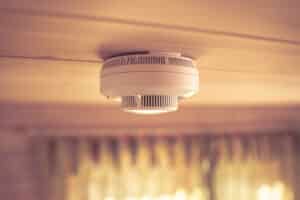Carbon Monoxide and You: Things You Need to Know
Stay Safe with These Simple Habits

Fall is a great time of year here in Southern California. Whether it’s attending school events, watching sports on television or participating in them, or just enjoying the moments before the holidays begin, this is a season for spectacular weather and making special memories with family and friends.
It’s also a time when you should be thinking about keeping your home safe from carbon monoxide. If you cook, if you drive a car, if you heat your house, or if you use your fireplace, you and your family are at risk for carbon monoxide poisoning.
As a colorless, odorless gas, carbon monoxide is generated by burning fuel. Outside or in well ventilated spaces, this gas can dissipate into the air without causing harm. However, in a closed area, it can do enormous damage. Dizziness, headache, and confusion are all signs of carbon monoxide poisoning. Tissue damage, coma and even death can occur without speedy intervention. People who are exposed to carbon monoxide poisoning while sleeping or even passed out are at greatest risk, as they can endure mild to major symptoms without detection before it’s too late.
Don’t let this happen to you. Implementing a few simple procedures around your home can prevent disaster.
- One of the most important of these habits is twofold: install smoke and carbon monoxide detectors in your home, and change their batteries twice a year. Strangely enough, Thanksgiving is a great day to do so and many local fire departments make it a tradition to remind their communities to do so during the holiday. Remember, smoke detectors are completely different from carbon monoxide detectors. Both are not only needed, but also required by law in the state of California for every floor of your home. Available from a hardware store for $20-$50 dollars, they’re designed for simple operation. Getting them into your home and changing their batteries are easy to do. Carbon monoxide and smoke detectors should last for five years. Replace them before or at the five year mark.
- Keep your gas appliances in good working order. From your furnace to your oven, don’t let an older or malfunctioning piece of equipment leak this deadly gas into your home. Make sure there’s space around all gas appliances, and that they are vented properly. When you use your stove, keep your exhaust fan running to ensure ventilation at all times. Never start your car with the garage door closed, and have your furnace, fireplace,and flue inspected every year.
- As temperatures get colder, don’t forget about ventilation. Carbon monoxide poisoning occurs in closed rooms. Make sure appliances, including space heaters, aren’t shoved against a wall and that your vents are not blocked by furniture, or other household detritus. Don’t leave a space heater unattended or go to sleep with one on. Never use your stove or other appliance as a heat source for your home.
- Test for carbon monoxide if necessary. Our HVAC technicians can easily do so.
Over the years, there have been too many senseless tragedies from the effects of carbon monoxide. Don’t let your family become a statistic. Have questions about your gas appliances? Give us a call. We want to keep you as long term customers, healthy and happy for years to come.
Gas furnaces need yearly inspections and service to stay safe. Call Air-Tro today to schedule your next visit from one of our qualified technicians. (626) 357-3535.
